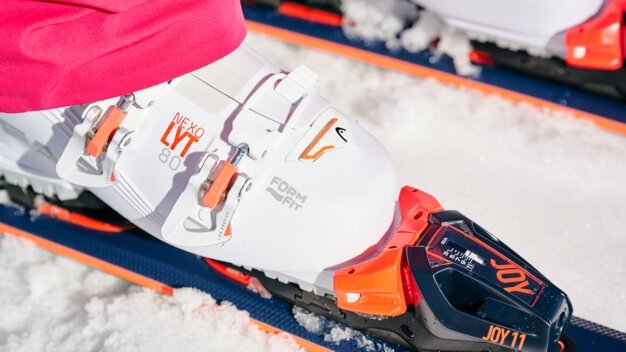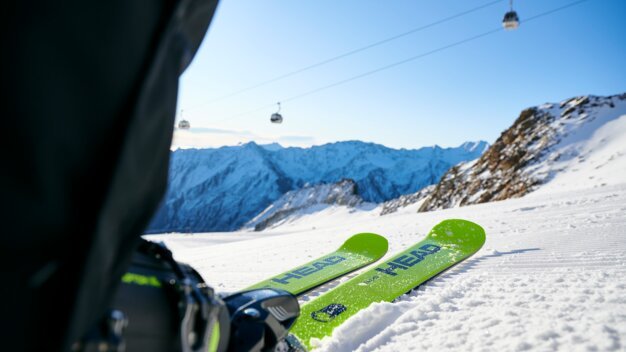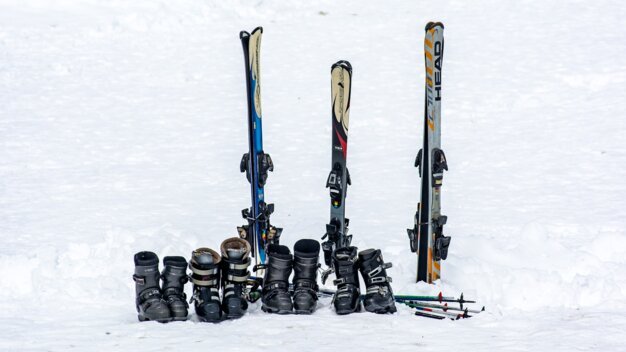
You only realise how important a good ski boot is when it pinches! Many winter sports enthusiasts can probably tell you a thing or two about this ... INTERSPORT Rent has put together a list of everything you need to know about ski boots so that this never happens to you again.
How do you find the right size ski boot?
Amazing: The right fit of the ski boot depends, above all, on how you ski! For leisurely carving, we recommend different ski boots than for speedy downhill fun. Don't be surprised if you are asked about your skiing style when you rent or buy ski boots!
Ski boots can be roughly differentiated into:
- ski boots for leisurely carving
- ski boots for sporty racers
- ski boots for touring skis
- ski boots for women
- performance ski boots for endurance skiers
- ski boots for children
- ski boots for freeride skiers
More information about the different ski boot models can be found below!
Size chart for ski boots:
Did you know that there is a size standard for ski boots? It is called Mondopoint (MP for short) and combines foot length and width.
|
MP |
EU | UK |
MP |
EU | UK | |
| 15.5 | 25 | 7.5 | 26.0 | 40.5 | 7.0 | |
| 16.5 | 26.5 | 8.5 | 26.5 | 41 | 7.5 | |
| 17.0 | 27.5 | 9.0 | 27.0 | 42 | 8.0 | |
| 17.5 | 28 | 10.0 | 27.5 | 42.5 | 8.5 | |
| 18.5 | 29 | 11.0 | 28.0 | 43 | 9.0 | |
| 19.5 | 30.5 | 12.0 | 28.5 | 44 | 9.5 | |
| 20.0 | 31 | 13.0 | 29.0 | 44.5 | 10.0 | |
| 20.5 | 32 | 1.0 | 29.5 | 45 | 10.5 | |
| 21.0 | 33 | 2.0 | 30.0 | 45.5 | 11.0 | |
| 21.5 | 34 | 3.0 | 30.5 | 46 | 11.5 | |
| 22.0 | 35 | 3.5 | 31.0 | 47 | 12.0 | |
| 22.5 | 36 | 4.0 | 31.5 | 47.5 | 12.5 | |
| 23.0 | 36.5 | 4.5 | 32.0 | 48 | 13.5 | |
| 23.5 | 37 | 5.0 | 32.5 | 48.5 | 13.5 | |
| 24.0 | 38 | 5.5 | 33.0 | 49 | 14.0 | |
| 24.5 | 38.5 | 6.0 | 33.5 | 50 | 14.5 | |
| 25.0 | 39 | 6.5 | 34.0 | 51 | 15.0 | |
| 25.5 | 40 | 7.0 |
Good to know: The ski boot should preferably be smaller rather than too big. Usually, the padding of the liners gives way after a few days on the slopes, and the boot's size increases by up to half a size. This makes it all the more important to make sure that the boot fits rather tight in the beginning. In our experience, most skiers wear ski boots that are too wide. Are you one of them?
What is the Flex Index for ski boots?
The Flex Index indicates how stiff the boot shaft is in the front. The higher the Flex Index, the greater the resistance at the shin. Which Flex Index is right for you depends on aspects such as your ability and skiing technique, weight and mobility. For example, a high Flex Index will give you better control of the ski, but you will have to accept limited ankle mobility. In addition, the stiffness of the boot can change enormously in cold temperatures, even by up to 20 percent. The Flex Index is not standardised, which means that every ski boot manufacturer works with different values. Of course, we will be happy to advise you on this in one of the numerous ski rental shops at the ski resorts!
A quick summary: We recommend ski boots with a high Flex Index for experienced skiers.
This is how high-tech today's ski boots are
Fortunately, today's ski boots have nothing in common with the leather straps of the past! We are always amazed at how high-tech they are. Be it brushed polyamide, which protects the feet from impacts like a protective shield, or adjustable aluminium cantings for plenty of comfort – ski boots are so high-quality nowadays that you won't even want to take them off anymore. Almost every year, manufacturers launch innovations that make skiing even more enjoyable. With rental ski boots from INTERSPORT Rent, you are guaranteed to always have the latest models to choose from.
Which type of ski boot is right for you?
As mentioned above, ski boots can be divided into different types.
- All-mountain ski boots are very trendy right now. No wonder – they're the all-rounders among boots and suitable for all weather and snow conditions. In addition, skiers love all-mountain ski boots because of their high level of comfort and good insulation. The flex of these ski boots is usually low, so they are more suitable for leisurely skiing than downhill racing.
- Beginners love comfortable ski boots that can be put on and taken off quickly. The ski boot must not be too tight and should not feel constricting, so beginners' ski boots usually have a lower Flex Index.
- The opposite of this are tough racing boots. They have a tight fit and a harder shell. By the way, freeride skiers also swear by the harder models, as they give them maximum control in deep powder snow and in the backcountry.
- Small children's feet need an extra bit of protection and comfort. For toddlers, rear-entry ski boots are ideal, while older children enjoy self-shaping tongues.
As you can see: Finding the perfect ski boot doesn't just depend on the size of your feet!
Why should I have my ski boots fitted?
Fitted ski boots offer the best fit, highest comfort and great hold. Once fitted, the ski boot is not only comfortable but also functional. The individual fit supports any kind of malalignment, narrow feet or wide calves during your winter sports adventures. The same goes for other "problem areas" that otherwise cause you discomfort when skiing. The INTERSPORT professionals at our shops will be happy to fit your ski boots for you!
INTERSPORT Rent Tip
What doesn't fit is made to fit! Take any tight and pinching ski boots to an INTERSPORT Rent shop at your holiday destination, and the RENTertainers on site will make them more comfortable for you!







